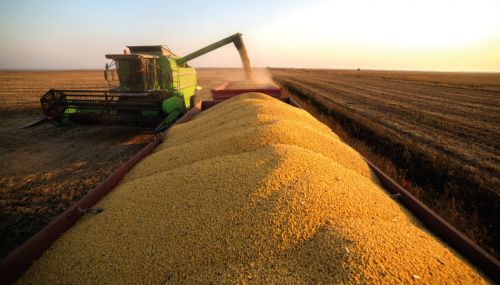All
Proposed RFS Changes Draw Diverse Reactions
by Ed Burke, Dennis K. Burke Inc.

In May, the U.S. Environmental Protection Agency (EPA) announced its proposed 2017 renewable fuel standards (RFS) that would raise the amount of biofuels required to be blended into gasoline and diesel from 18.11 billion gallons in 2016 to 18.8 billion gallons. Although the 2017 mandate is 3.8 percent higher than the 2016 level, it still well below the 24-billion-gallon biofuels target set by Congress back in 2007.
The proposed volumes would represent growth over historic levels including:
• Total renewable fuel volumes would grow by nearly 700 million gallons between 2016 and 2017.
• Advanced renewable fuel (requiring 50 percent lifecycle carbon emissions reduction) would grow by nearly 400 million gallons between 2016 and 2017.
• Conventional biofuels (requiring 20 percent lifecycle carbon emissions reduction) would increase by 300 million gallons between 2016 and 2017.
• Biomass-based biodiesel (requiring 50 percent lifecycle emissions reduction) would increase by 100 million gallons between 2017 and 2018.
• Cellulosic biofuel (requiring 60 percent carbon emissions reduction) would grow by 82 million gallons, or 35 percent between 2016 and 2017.
Stakeholder Comments
In June, EPA held a public hearing and webcast to give stakeholders an opportunity to comment on the proposed RFS volumes.
It was no surprise that the biofuels supporters were not pleased with the numbers that fell significantly short of what the RFS originally proposed. Folks from the biofuels industry believe EPA simply backed down over the blend wall issue, and ignored the volumes set by Congress. That move is still being challenged in court, but that court case is not likely to happen until 2017.
Oil industry associations showered the EPA with praise for understanding the marketplace conditions and using their statutory waiver authority to lower the RFS volume obligations.
The president of the Renewable Fuels Association said that the suggestion by EPA and others that the levels required should be lowered because the marketplace isn’t expanding fast enough is just wrong. “The RFS was intended to change… the marketplace,” the CEO said, adding that the very discussion indicates, “EPA does not understand what this process is all about.”
Marketplace Realities
Is the RFS forcing consumers to use more biofuel than vehicles, engines and fueling infrastructure can handle? The oil industry says that the domestic market is simply unable to blend more ethanol into gasoline, that there is not a lot of demand for higher blends, and that there are serious liability issues involved.
EPA points out that higher blends of biofuels could be the answer to working around the blend wall that caps ethanol blends at 10 percent. E85 blends for 2016 are expected to reach 200 million gallons, and E15 blends are projecting to reach 320 million gallons this year. Together, this represents just 0.4 percent of the total 142 billion gallons of fuel used by vehicles and other equipment.
The Obligated Parties Issue
On June 13, Valero Energy Corp. issued a petition to the agency to redefine obligated party under the RFS. Valero made a similar request earlier this year. Refiners and importers are currently considered obligated parties under the RFS. Valero is asking EPA to redefine obligated party as “the entity that holds title to the gasoline or diesel fuel, immediately prior to the sale from the bulk transfer/terminal system… to a wholesaler, retailer or ultimate consumer.”
Valero claims the change would enable the market to more readily respond to the annual renewable volume obligation (RVO) standards, begin to address the structural constraints that EPA identified in its 2015 RFS rulemaking, and eliminate barriers that prevent RIN value from being passed through to consumers.
Valero owns and operates refineries in the U.S., Canada, the U.K. and the Caribbean. Valero is also the nation’s third largest ethanol producer, and one of the largest U.S. producers of renewable diesel.
At the public hearing, SIGMA urged EPA not to change the definition of obligated party under the RFS program. Some refiners have petitioned EPA in recent years to switch the point of obligation from refiners and importers to blenders.
As SIGMA has stated in previous comment letters to EPA, non-manufacturers have no control over the composition of the petroleum products with which renewable fuels must be blended in order to be sold as motor fuels. Manufacturers and importers not only have control over the composition of the products they sell, but also the terms under which they sell them, and thus should remain the obligated parties.
Could a New Rule Help?
EPA is hoping a new rule will help resolve some of the RFS problems. In May, the agency submitted a proposed rule to the White House Office of Management and Budget, titled the “Renewable Enhancement and Growth Support Rule.” EPA says the RFS amendment would make several changes to promote the production of renewable fuels. It resolves some outstanding issues, clarifies certain RFS requirements, and makes numerous technical corrections. The agency began the rulemaking process back in May 2015.
EPA is accepting written comments on the proposed RFS volumes through July 11th and intends to finalize the RVOs later this year.
Related Posts
 Why Quality Matters in Your Biofuel Blends
Why Quality Matters in Your Biofuel Blends
Posted on June 25, 2025
 Incorporating Higher Blends of Biofuels
Incorporating Higher Blends of Biofuels
Posted on May 14, 2025
 NORA Programs at Eastern Energy Expo
NORA Programs at Eastern Energy Expo
Posted on May 13, 2025
 March Short-Term Energy Outlook
March Short-Term Energy Outlook
Posted on April 28, 2025
Enter your email to receive important news and article updates.
